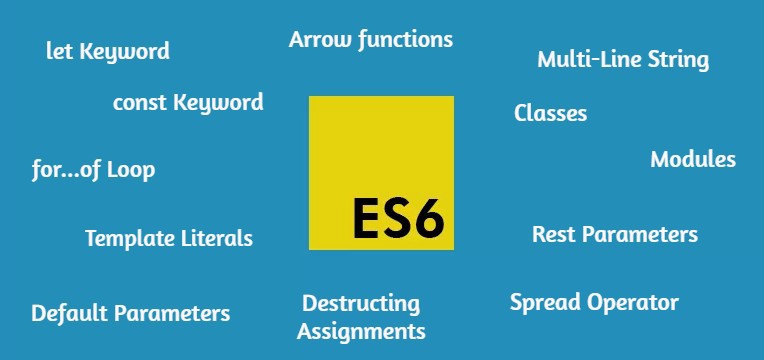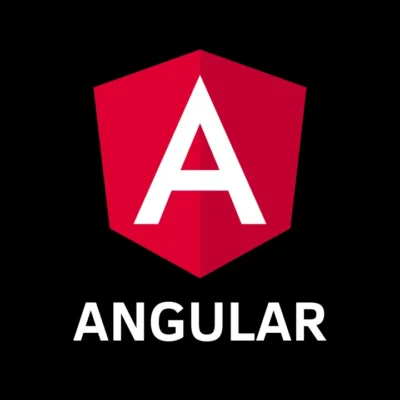Looking for ES6 interview questions and answers? Check out this guide for a list of common ES6 interview questions and sample answers. Learn about topics such as let and var, default parameters, template literals, destructuring, the spread operator, and arrow functions in ES6. Whether you’re a job candidate or interviewer, this guide can help you prepare for an ES6 coding interview.
Common ES6 interview questions and answers
Q: What is ES6?
A: ES6, also known as ECMAScript 2015, is the sixth edition of the ECMAScript standard. It is a scripting language specification that is used to standardize JavaScript. It introduces new features and syntax for writing JavaScript code, making it more powerful and easier to read.
Q: What are the new features in ES6?
A: ES6 introduces several new features, including arrow functions, classes, let and const keywords for declaring variables, template literals, destructuring, spread and rest operators, default parameters, and more.
Q: What is the difference between var, let, and const in ES6?
A: In ES6, var is used to declare a variable with function-level scope, while let and const are used to declare variables with block-level scope. The main difference between let and const is that let allows the variable to be reassigned, while const does not.
Q: What are arrow functions in ES6?
A: Arrow functions are a new syntax for writing functions in ES6. They provide a shorter and more concise way of writing functions, and also have lexical scoping, which means they inherit the scope of the parent function.
Q: What are template literals in ES6?
A: Template literals are a new way of writing strings in ES6. They allow for string interpolation, which means you can embed expressions inside a string literal, making it easier to create dynamic strings.
Q: What is the spread operator in ES6?
A: The spread operator is a new syntax in ES6 that allows an array or object to be expanded into its individual elements. It is denoted by the ellipsis (…) and can be used to easily concatenate arrays, pass arguments to functions, and more.
Q: What is destructuring in ES6?
A: Destructuring is a new syntax in ES6 that allows you to extract values from an array or object and assign them to variables. It provides a concise way of accessing properties or elements and is commonly used with function parameters or for unpacking variables.
Q: What are classes in ES6?
A: Classes are a new way of defining objects in ES6. They provide a more familiar syntax for creating objects with a constructor and methods, and also support inheritance and static methods.
Q: What are default parameters in ES6?
A: Default parameters are a new feature in ES6 that allow you to set default values for function parameters. If a parameter is not passed to a function, it will use the default value instead.
Q: What is the difference between a for…in loop and a for…of loop in ES6?
A: The for…in loop is used to iterate over the properties of an object, while the for…of loop is used to iterate over the values of an iterable object, such as an array or a string. The for…of loop provides a simpler and more readable syntax for iterating over arrays and other iterable objects.
Recommended: Top Javascript interview questions and answers mostly asked.
ES6 coding interview question and answers
Q: What is the difference between let and var in ES6?
A: The main difference between let and var is their scope. Variables declared with var are function-scoped, while variables declared with let are block-scoped. This means that variables declared with let are only accessible within the block they are declared in, while variables declared with var are accessible within the entire function.
Q: How can you create a default parameter in a function in ES6?
A: To create a default parameter in a function in ES6, you can simply assign a default value to the parameter in the function declaration. For example:
function greet(name = 'Guest') {
console.log(`Hello, ${name}!`);
}
greet(); // Hello, Guest!
greet('John'); // Hello, John!
Q: What are template literals in ES6 and how do they work?
A: Template literals are a new way of writing strings in ES6 that allow for string interpolation and multiline strings. They are denoted by backticks (`) and can contain placeholders (${expression}) that are replaced with the result of evaluating the expression. For example:
const name = 'John';
const age = 30;
const message = `My name is ${name} and I am ${age} years old.`;
console.log(message);
// Output: My name is John and I am 30 years old.Q: What is destructuring in ES6 and how can it be used?
A: Destructuring is a way to extract values from arrays or objects and assign them to variables. It provides a shorter syntax for accessing nested values in arrays and objects. For example:
const person = {
name: 'John',
age: 30,
address: {
street: '123 Main St',
city: 'Anytown',
state: 'CA',
zip: '12345'
}
};
const { name, age, address: { city } } = person;
console.log(name); // John
console.log(age); // 30
console.log(city); // AnytownQ: What is the spread operator in ES6 and how can it be used?
A: The spread operator is denoted by three dots (…) and is used to expand an array or object into individual elements. It can be used to combine arrays, clone an array, or pass arguments to a function. For example:
const nums1 = [1, 2, 3];
const nums2 = [4, 5, 6];
const combined = [...nums1, ...nums2];
console.log(combined); // [1, 2, 3, 4, 5, 6]
const clone = [...nums1];
console.log(clone); // [1, 2, 3]
function sum(a, b, c) {
return a + b + c;
}
const nums = [1, 2, 3];
console.log(sum(...nums)); // 6Q: What are arrow functions in ES6 and how can they be used?
A: Arrow functions are a new syntax for writing functions in ES6 that provide a more concise and expressive way to create functions. They are defined using the => arrow and are also known as “fat arrow functions”. Here’s an example of an arrow function that adds two numbers:
const add = (a, b) => {
return a + b;
};
// shorter version (without curly braces)
const add = (a, b) => a + b;
// calling the function
console.log(add(2, 3)); // Output: 5Arrow functions have several benefits, including:
- They have a shorter syntax, which can make code more readable and easier to write.
- They don’t bind their own
thisvalue, which can be helpful when dealing with object-oriented programming. - They can be used as anonymous functions or as callbacks, which can simplify code and make it more concise.
- They have implicit return, which allows for shorter code and less verbose syntax.
However, arrow functions also have some limitations, such as not being able to bind their own this value or having access to certain built-in functions.





